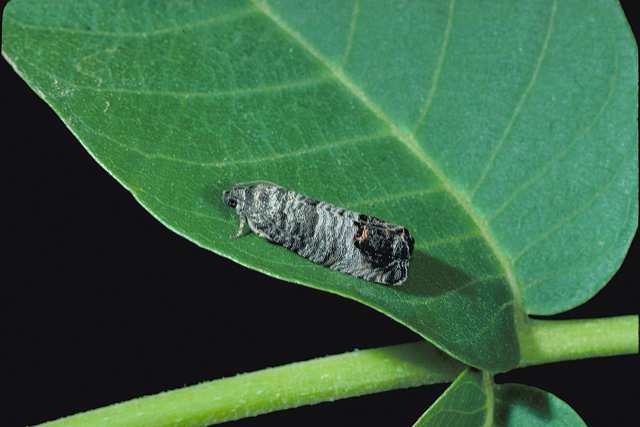Codling moths, it appears, are arriving late to the party this year.
Continued cold, wet and windy weather in early April slowed moth activity. University of California Cooperative Extension (UCCE) advisors in the Sacramento Valley and northern San Joaquin Valley reported little codling moth (CM) activity, but they did expect that as temperatures increased, more moths would be moving.
Jhalendra Rijal, IPM advisor in Merced and Stanislaus counties said both regular pheromone traps and CMDA (pear ester plant volatile) traps were coming up empty at the first of April and no bio fix had been set. Pest control advisors (PCAs) are reporting similar information, he said.
On April 16 Rijal reported capture of a male CM in pheromone trap. He said there have been reports from PCAs of one to two moth captures in San Joaquin and Stanislaus counties.
Emily Symmes, area IPM advisor in Sacramento Valley said by April, codling moth activity usually has been seen and an idea of the population levels could be determined. Last year’s bio fix was April 1. This year no one in the Sacramento Valley has indicated bio fix or much of the start of the first flight.
Codling moth, one of the most destructive walnut pests, can affect yields by causing nutlets to drop to the ground or affect nut quality. First generation larvae feeding will drop nutlets. Later first generation or the second or third generation larvae bore into the nuts.
This pest overwinters as larvae under tree bark or in under ground under orchard trash. Moths generally emerge as early variety walnuts trees are leafing out.
According to Symmes, there is an established IPM (integrated pest management) program for controlling codling moth in walnuts. The plan balances control costs with crop yields, quality and health targets to be cost effective. Predictable phenology, degree-day development models and treatment thresholds for codling moth are valuable for good control program. Codling moth can also be managed using several methods alone or in combination. Symmes also notes that effective control of codling moth early in the season can reduce harvest damage by navel orangeworm.
Management options for codling moth in walnut orchards include both mating disruption and insecticide sprays. Need for treatment is based on orchard history, in-season trap catches and in season damage evaluations, depending on the flight.
A Population Assessment Treatment Threshold can be found in the Spring 2019 edition of Sacramento Valley Walnut News. Once need for treatment of codling moth population is determined, the mode of action, and residual performance of the selected insecticide will show the most effective application timing. Timings can also be found in the UC IPM guidelines at http://www2.ipm.ucanr.edu/agriculture/walnut/codling-moth/#TABLE1.
The insecticides most commonly used for codling moth are pyrethroids, organophosphates and insect growth regulators.

Cecilia Parsons
Cecilia Parsons has lived in the Central Valley community of Ducor since 1976, covering agriculture for numerous agricultural publications over the years. She has found and nurtured many wonderful and helpful contacts in the ag community, including the UCCE advisors, allowing for news coverage that focuses on the basics of food production.
She is always on the search for new ag topics that can help growers and processors in the San Joaquin Valley improve their bottom line.
In her free time, Cecilia rides her horse, Holly in ranch versatility shows and raises registered Shetland sheep which she exhibits at county and state fairs during the summer.
















